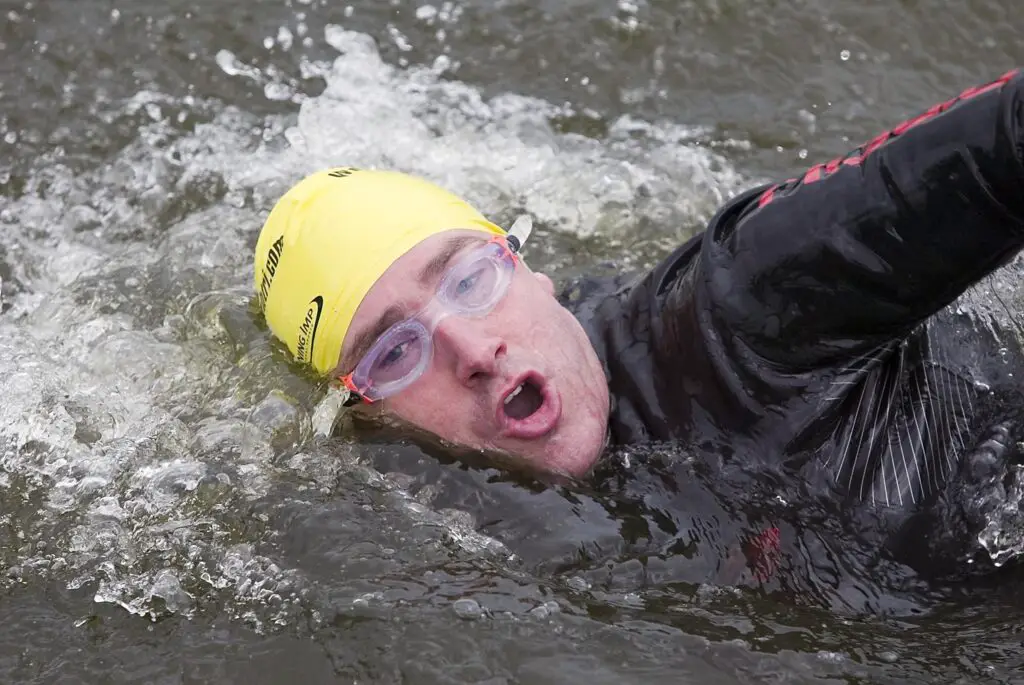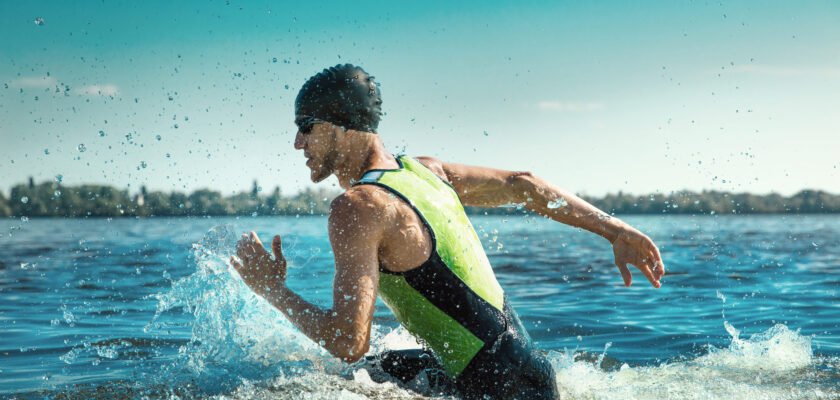Water marathons are a sporting category of swimming that takes place in open water environments. It can be done in oceans (seas), lakes or rivers. Do you want to know all about the water marathon?
Open your Betano account and get up to 1,000 reais in bonuses.
Payments via PIX, live games and super odds!
Click here to open your account!

Continue reading and learn all about the water marathon!
All about the Water Marathon: what is it?
This sport is distinguished by requiring swimmers to cover long distances, usually more than 10 kilometers, in natural conditions, which can include variations in temperature, currents and waves.
Swimmers compete in courses that can be demanding, requiring physical endurance, technique and specific strategies to deal with the conditions of the aquatic environment;
The water marathon is recognized for its challenging nature and the need for intense preparation of the athletes, who must be ready to face various natural obstacles during the race;
The inclusion of the 10 km race in the Olympic program in 2008 further highlighted the importance and prestige of this discipline on the global sports scene.
Continue reading and learn all about the water marathon!
All about the Water Marathon: history
If swimming is an ancient practice, swimming long distances, whether in rivers or the open sea, became a relevant challenge in 1875, when the English captain Matthew Webb achieved a remarkable feat.
He became the first man to swim across the English Channel between England and France.
Using the breaststroke technique, Webb, who had failed in his first attempt on August 12, completed the crossing on August 24, after an exhausting 21 hours and 45 minutes of effort over a course of 64 km.
Continue reading and learn all about the water marathon!
This feat has inspired countless swimmers, who have gone on to tackle not only the English Channel, but also other points around the world.
Gradually, the open water competition gained popularity until, in 2005, the International Olympic Committee (IOC) announced the inclusion of the aquatic marathon in the Olympic Games program, with a 10 km race.
The aquatic marathon became the most recent swimming discipline to be included in the Olympic program with the introduction of the 10 km race at the Beijing Games in 2008.
Continue reading and learn all about the water marathon!
The short history of this discipline means that few National Olympic Committees and athletes have had the opportunity to excel.
Although some athletes dedicate themselves exclusively to the aquatic marathon, others also specialize in freestyle pool races, making these swimmers extremely competitive.
A prime example is Tunisian Oussama Mellouli, who won the gold medal in the men’s 1,500 meters freestyle at Beijing 2008 and, four years later, won the men’s aquatic marathon at London 2012.
Continue reading and learn all about the water marathon!
All about the Water Marathon: main features and fundamental rules
Now that you know almost all about the water marathon, let’s dive even deeper and learn about the competition’s characteristics and rules.
Water temperature
The water temperature is monitored before the competition. FINA stipulates that the water temperature must be between 16 and 31 degrees Celsius to ensure the safety of the athletes.
Equipment
Swimmers usually wear specific competition suits for open water, which may differ from those used in pool competitions. In Olympic competitions, the use of rubber suits is only permitted if the water temperature is below 18 degrees Celsius.
Use of the timing chip
Athletes wear a chip on their wrist to record their time.
Continue reading and learn all about the water marathon!
Security
Kayaks, boats and lifeguards are present along the course to ensure the swimmers’ safety. Medical support is available throughout the competition.
Food and hydration rules
There are designated areas where swimmers can hydrate and eat during the race. It is forbidden to touch the bottom or hold any object for support.
Signposting and marking the route
Buoys must be clearly visible and positioned in accordance with the competition guidelines to ensure that swimmers can follow the course correctly.
Continue reading and learn all about the water marathon!
Disqualification
Swimmers can be disqualified for various reasons, such as cutting the path, touching the bottom or leaning on objects, physically assaulting other competitors, or failing to complete the course within the allotted time.
Point of arrival
The race ends when the swimmer touches the finish board or crosses the designated finish line. The finish time is recorded by judges and timekeepers positioned on platforms and boats.
Anti-doping control
All athletes are subject to anti-doping tests, in accordance with competition and FINA rules.
Continue reading and learn all about the water marathon!
All about the Water Marathon: categories and distances
The water marathon is a sport that takes place in various categories and distances, mainly in open water competitions. The main disciplines include:
- 10 km races: this is the standard distance for the aquatic marathon in the Olympic Games and in many international championships. Swimmers cover 10 kilometers in open water.
- 5 km races: Commonly held at national and regional level competitions, these races require significant effort but are shorter than the 10 km races.
- 25 km races: this is a longer and more challenging distance, often included in world championships and other elite events. Swimmers face more extreme conditions and the race can last several hours.
- 2.5 km and 3 km races: these distances are common in smaller competitions and are used to develop athletes and enable greater participation in local and regional events.
Continue reading and learn all about the water marathon!
All about the Water Marathon: curiosities
- Water marathons became part of the Olympic program as a swimming discipline in 2008, at the Beijing Olympic Games. It wasn’t until the 2016 Olympics that this discipline was officially recognized as an Olympic sport.
- German swimmer Thomas Lurz is the biggest Olympic medalist in water marathons until the Tokyo 2020 Games, with a total of two Olympic medals, one silver and one bronze.
- The final moments of aquatic marathon competitions are often very exciting, characterized by a sprint, i.e. a significant increase in the swimmers’ speed towards the finish line.
- There are designated areas or boats where swimmers can hydrate and feed themselves without touching the bottom or holding onto any object for support.
Did you enjoy learning all about the water marathon? Stay here and read on:





